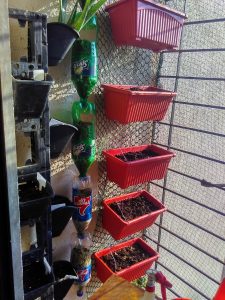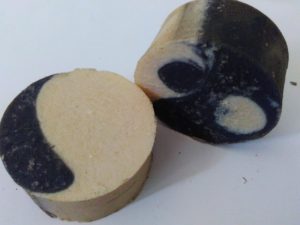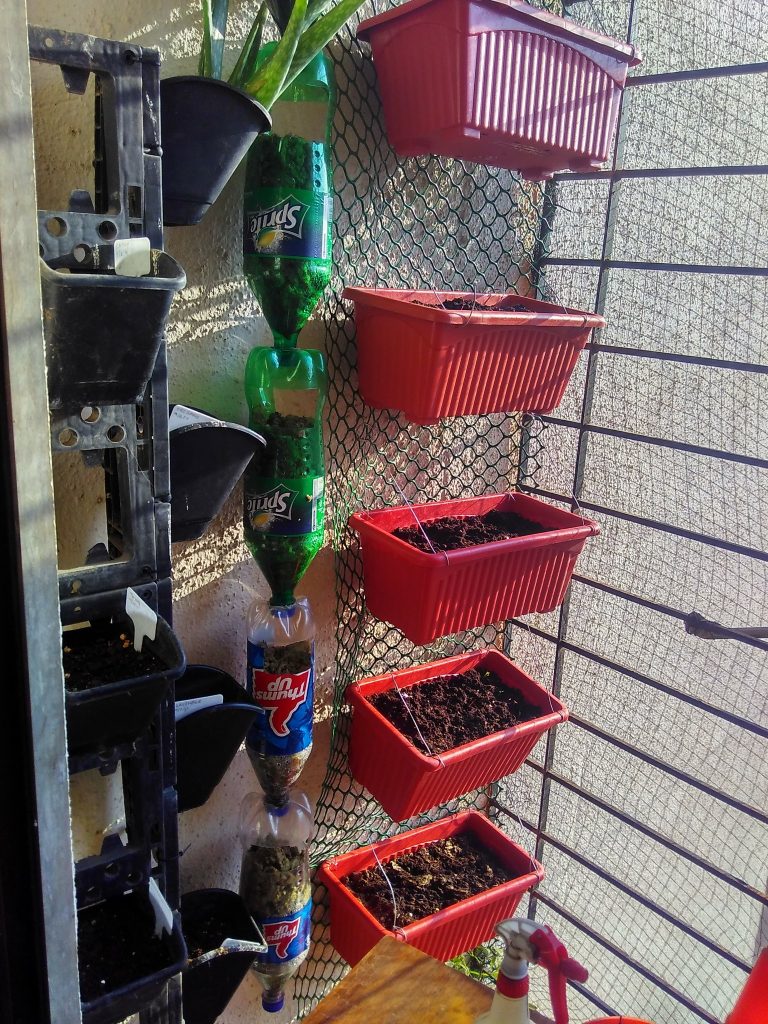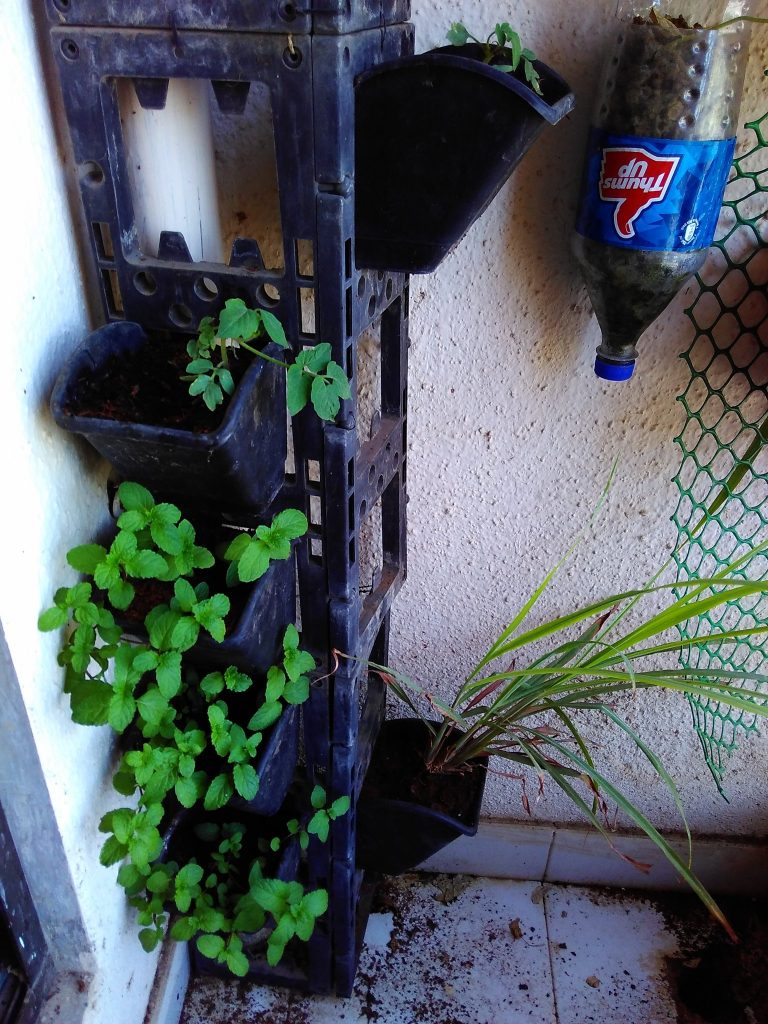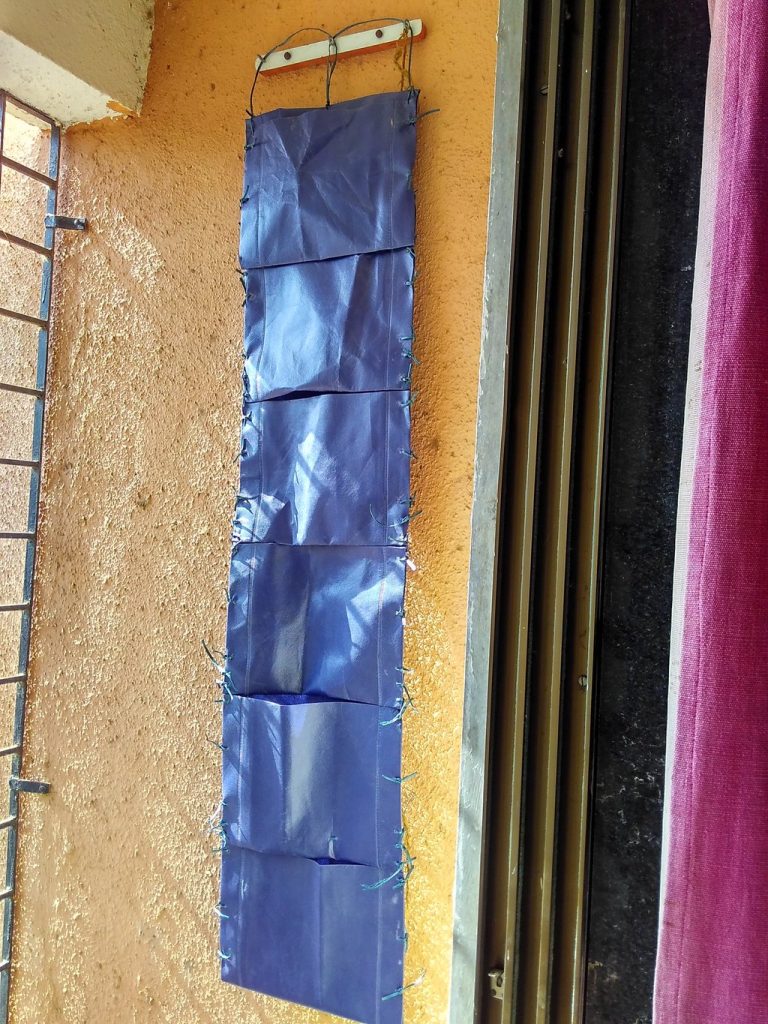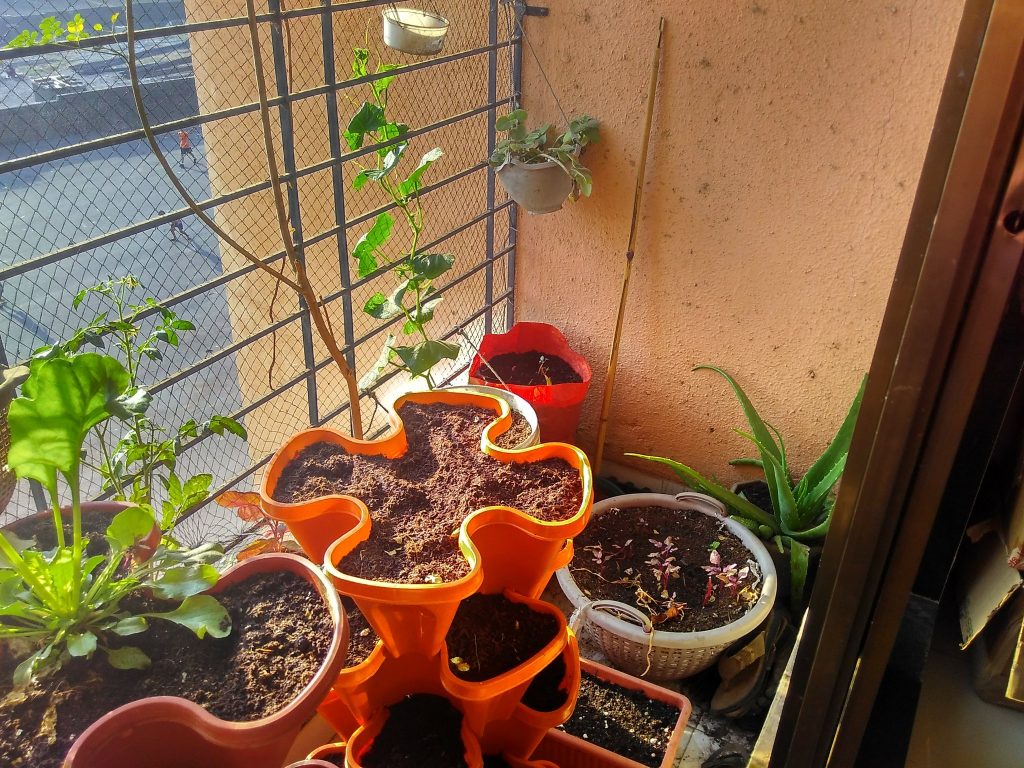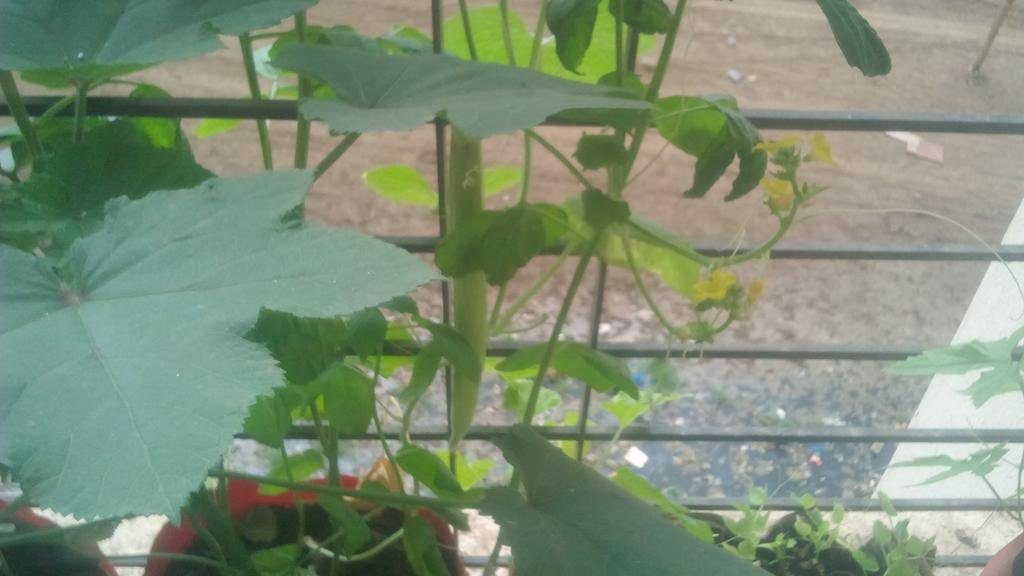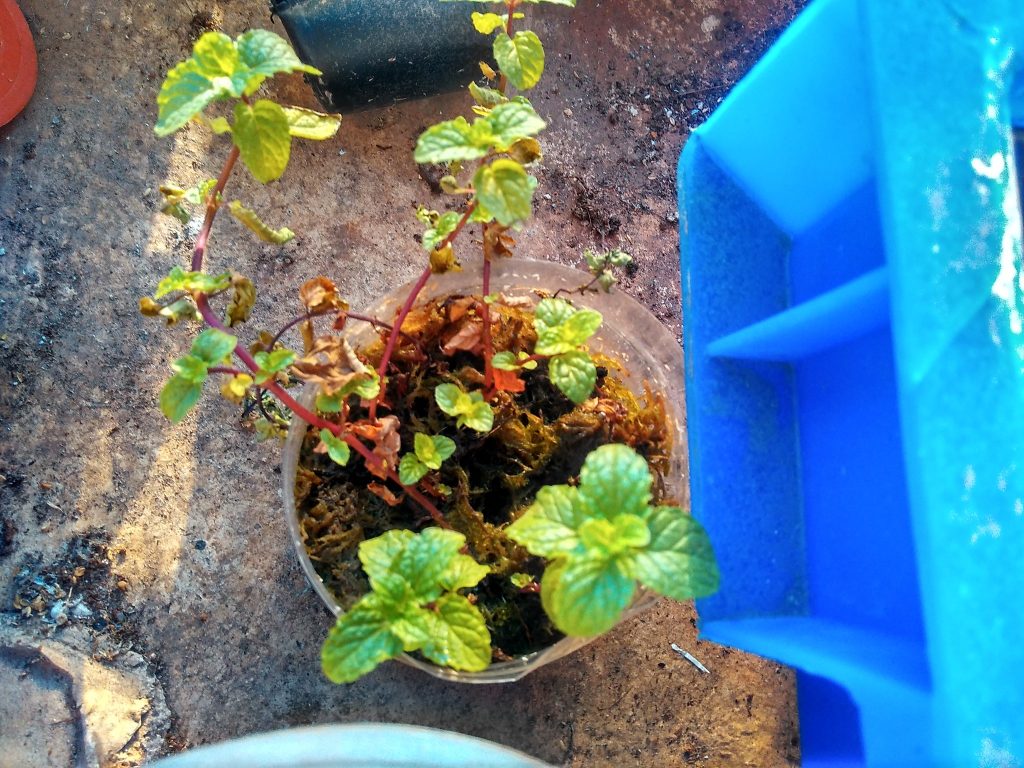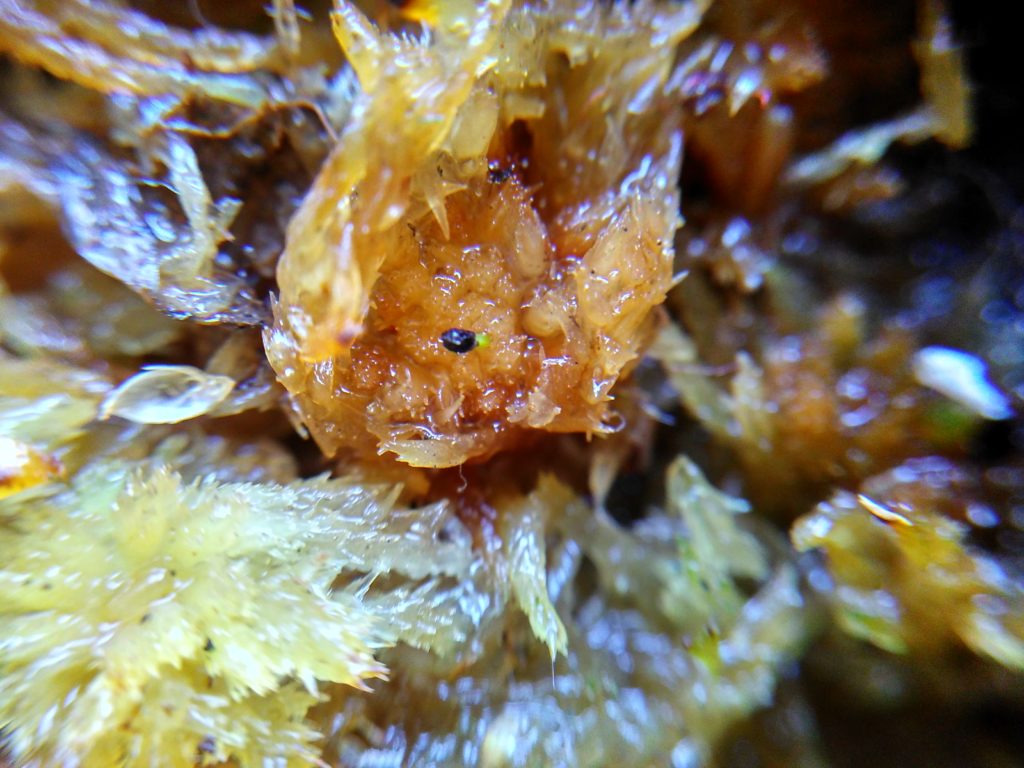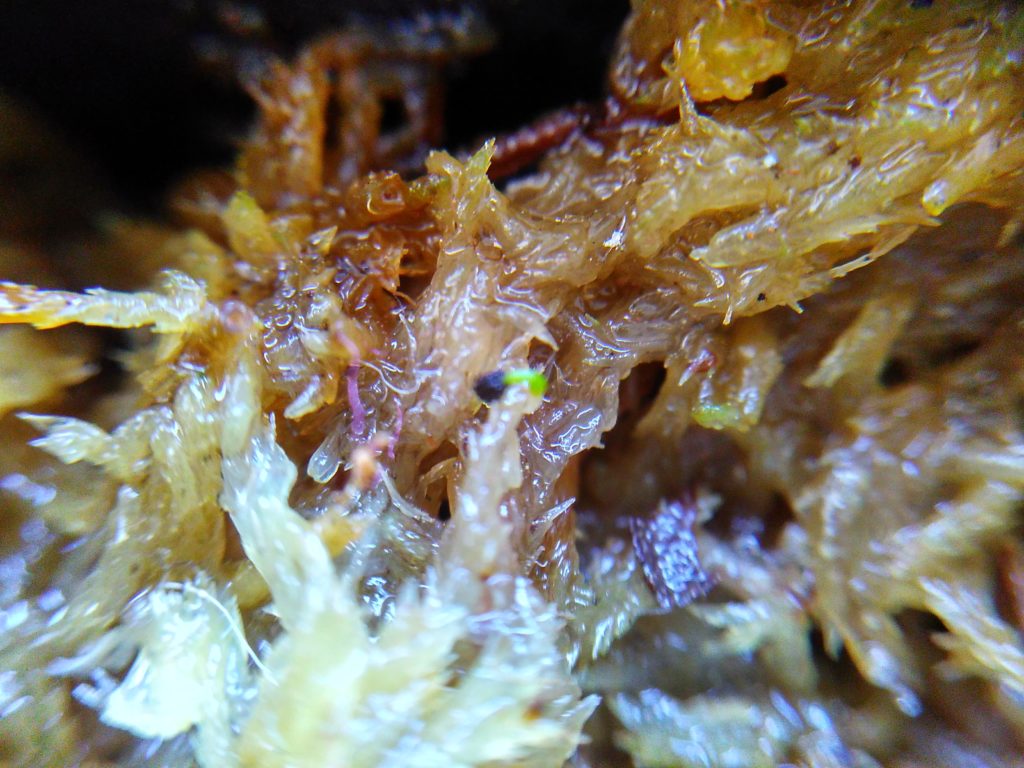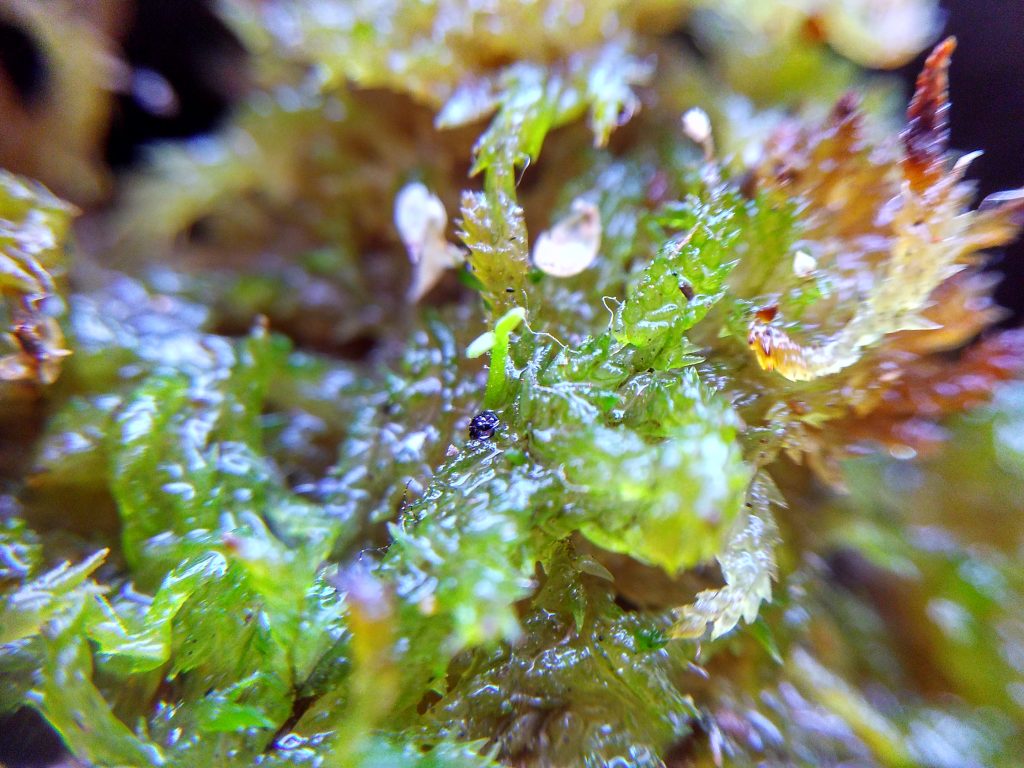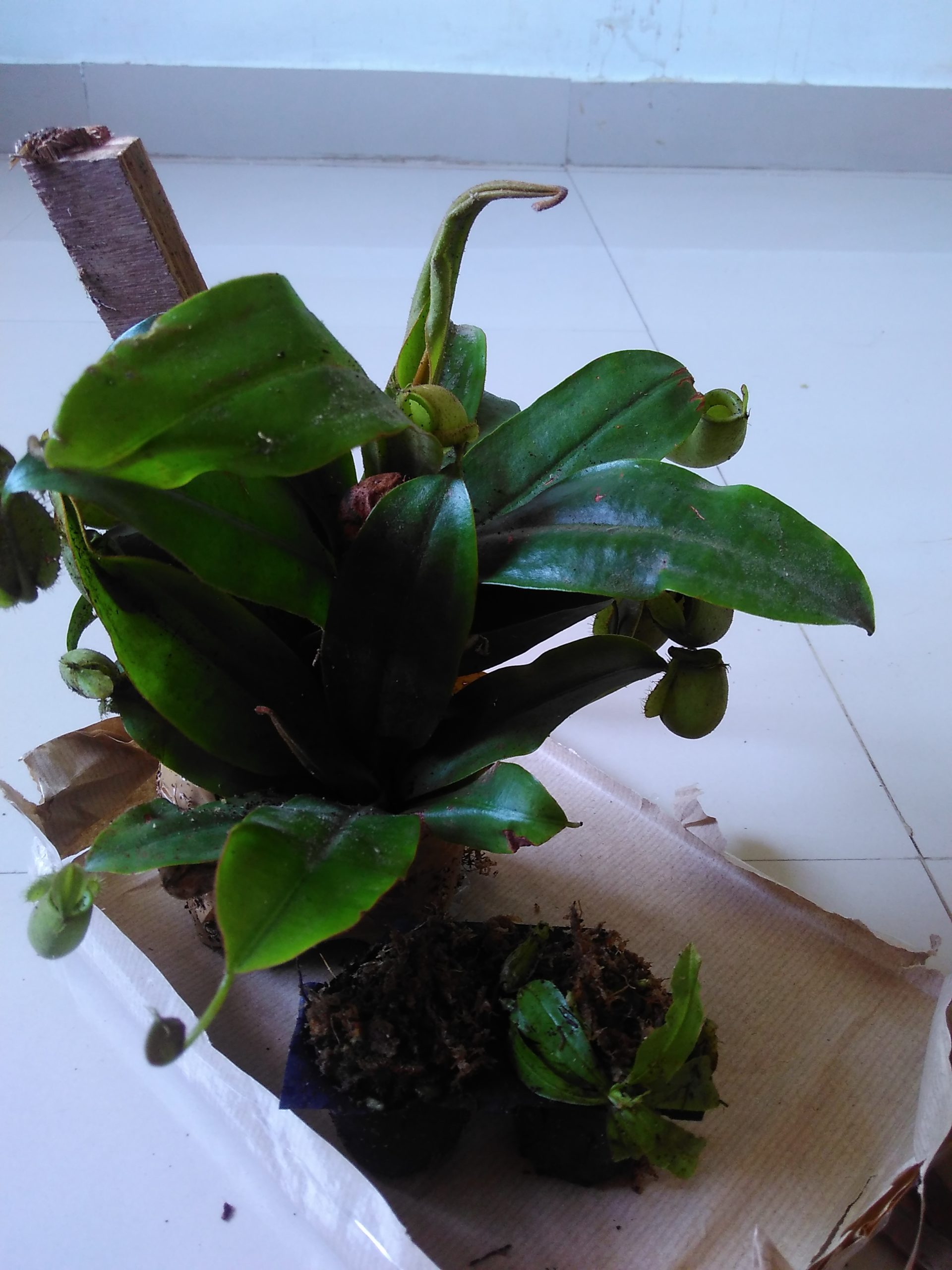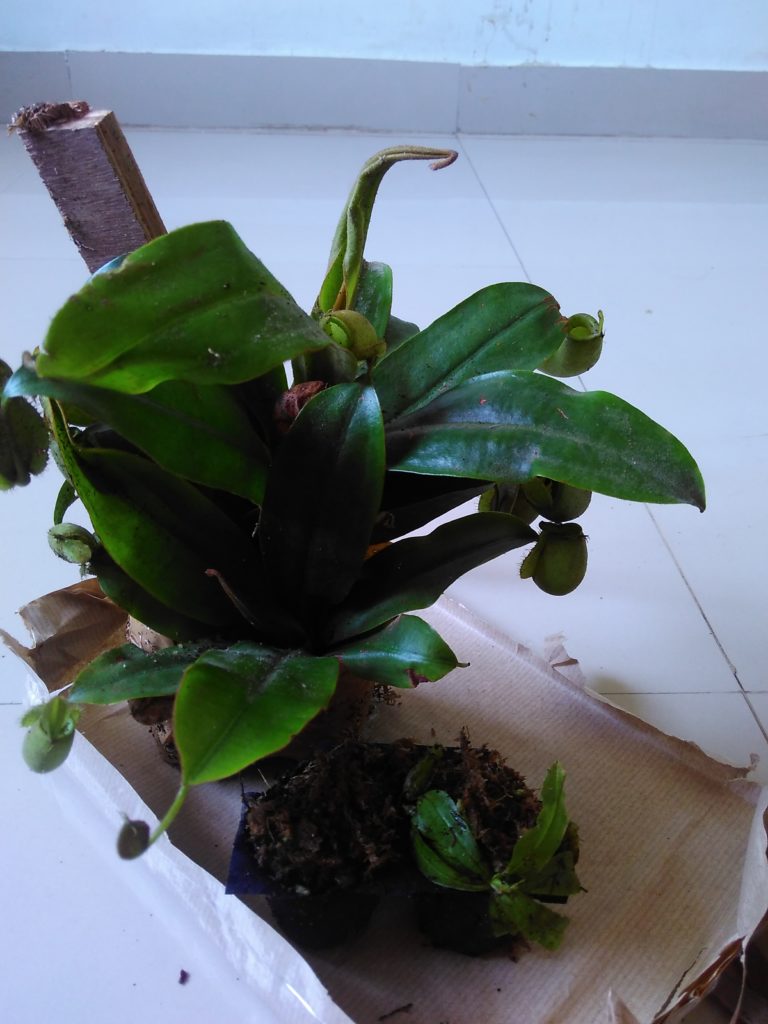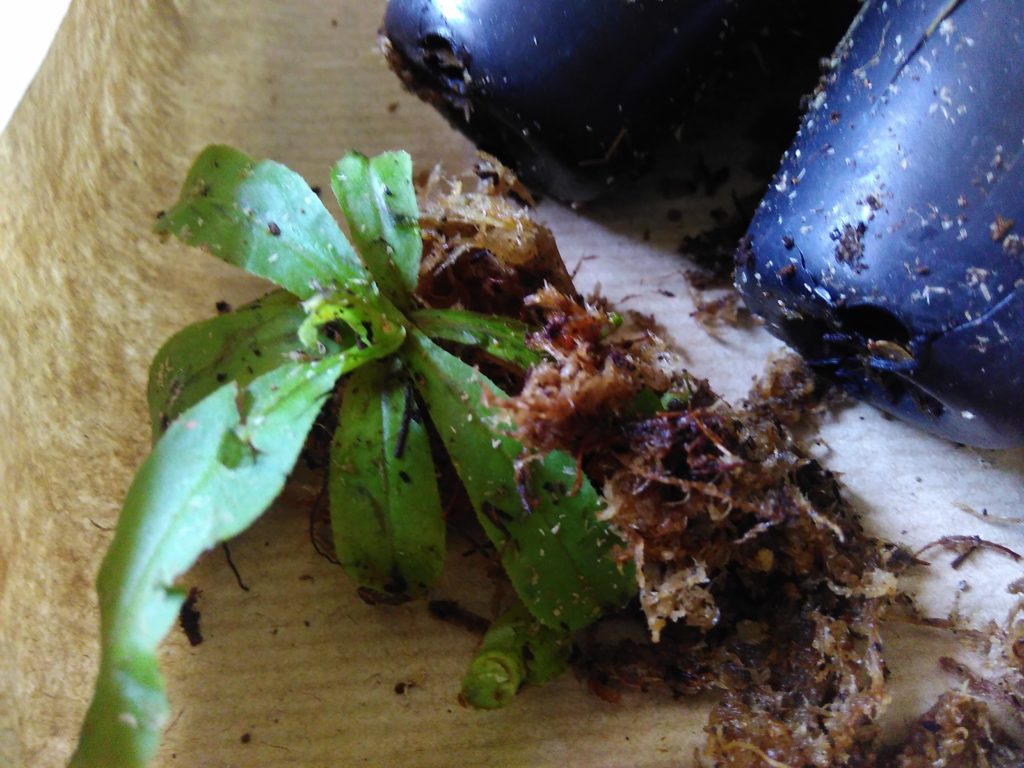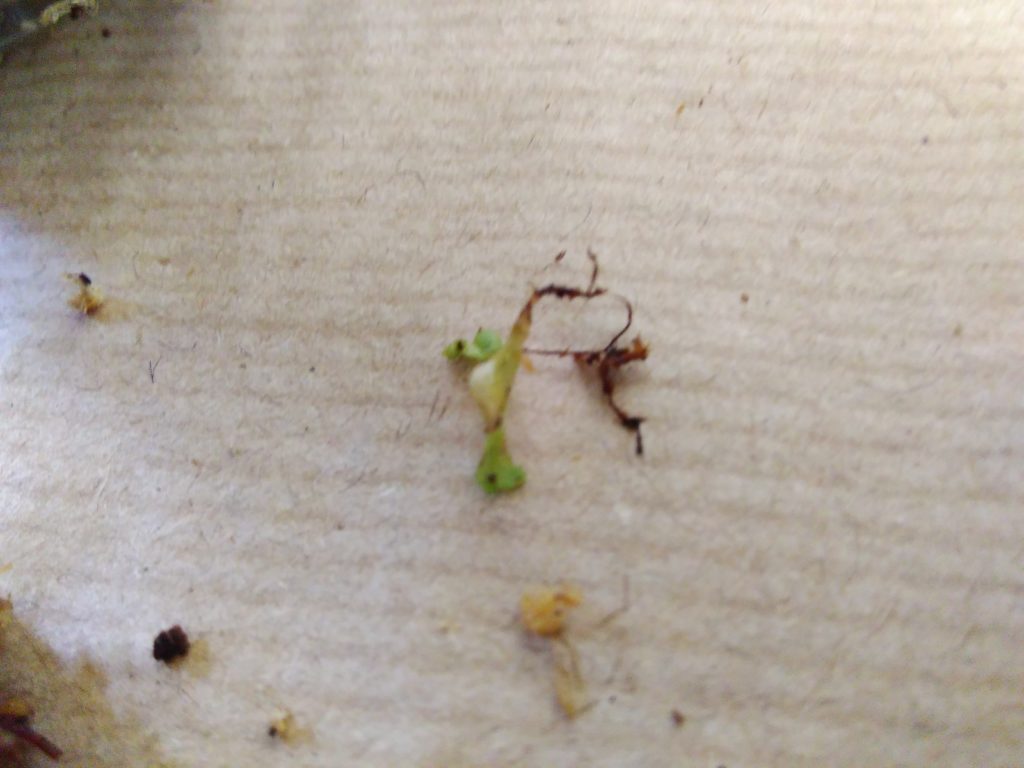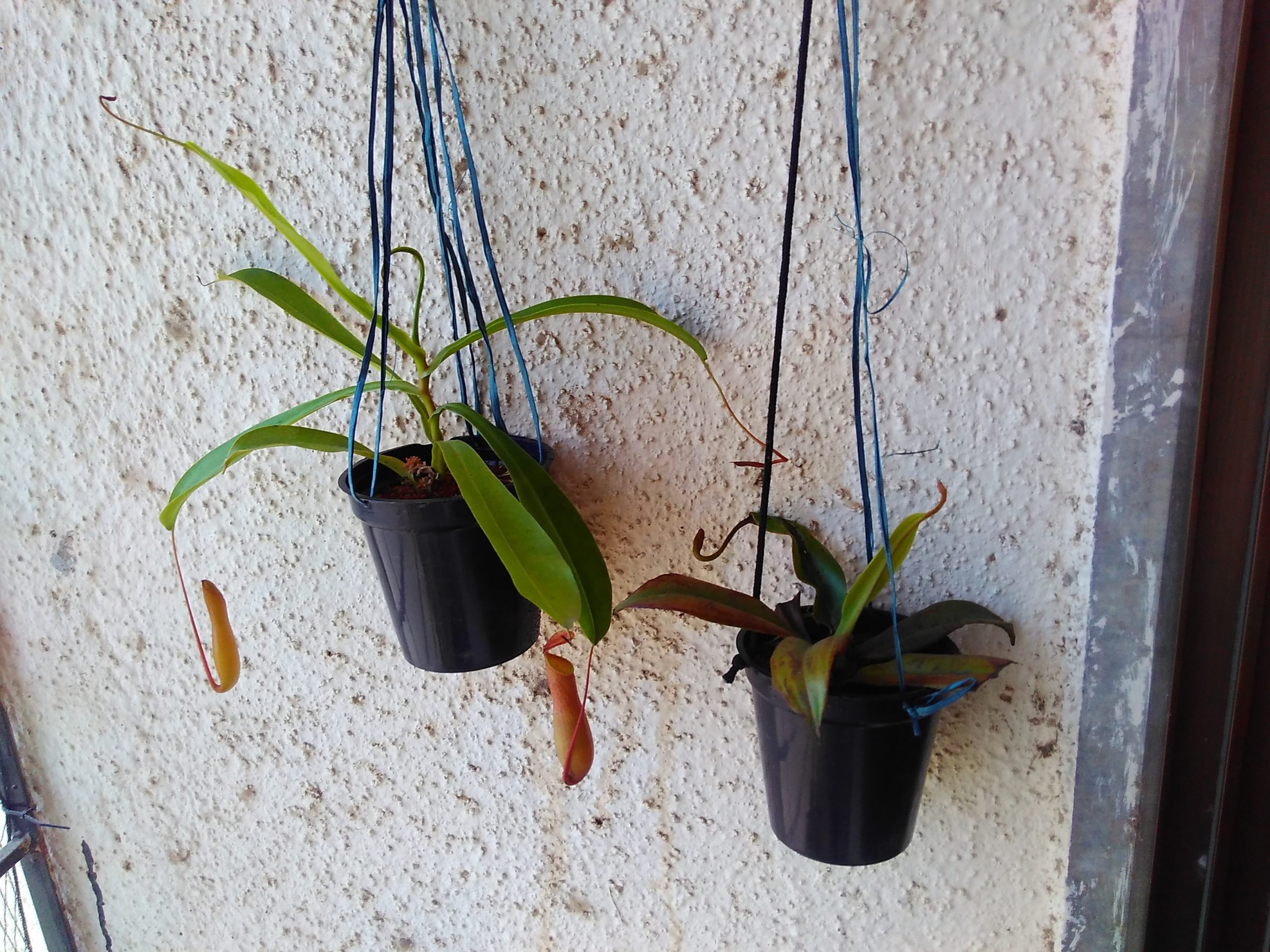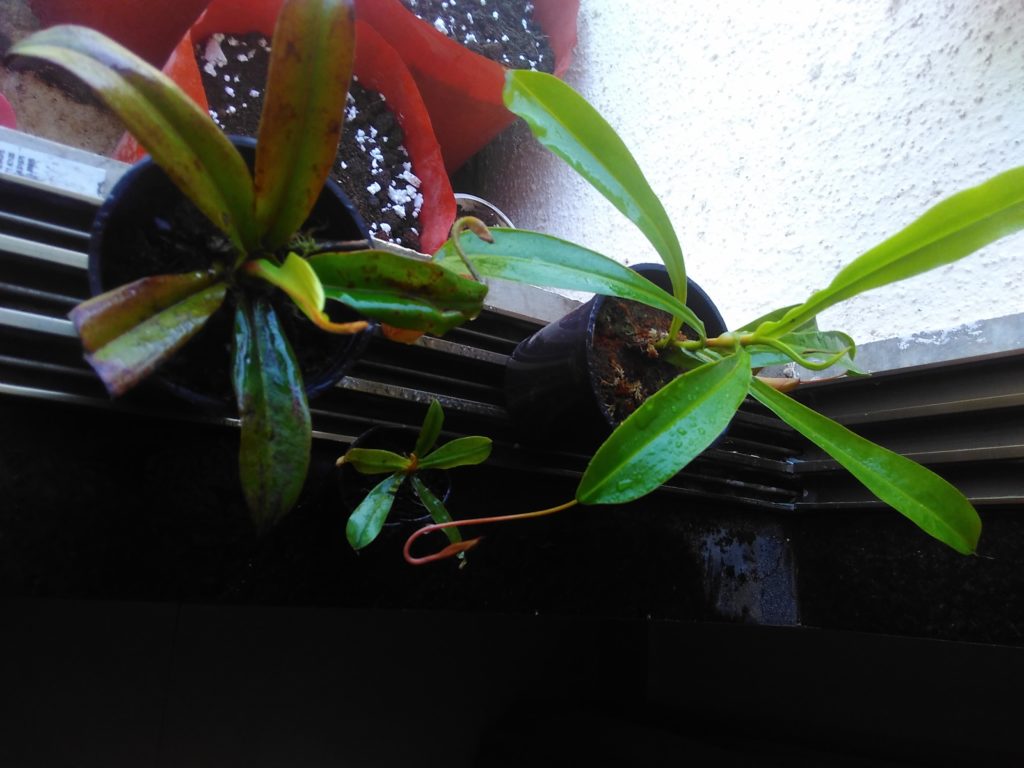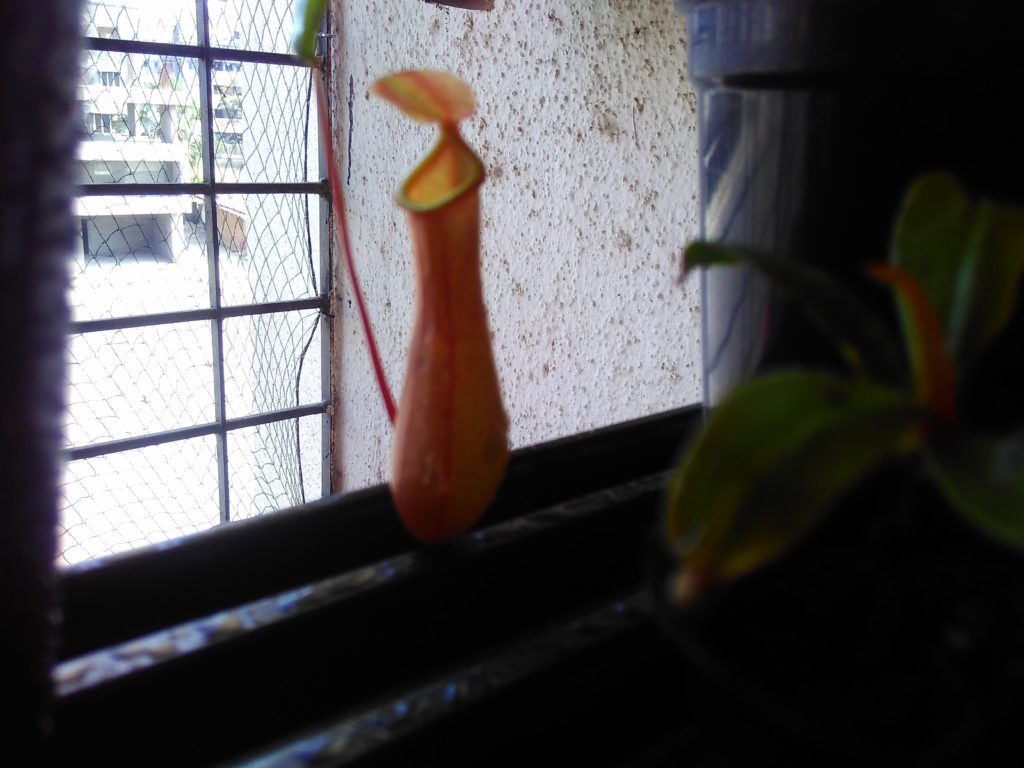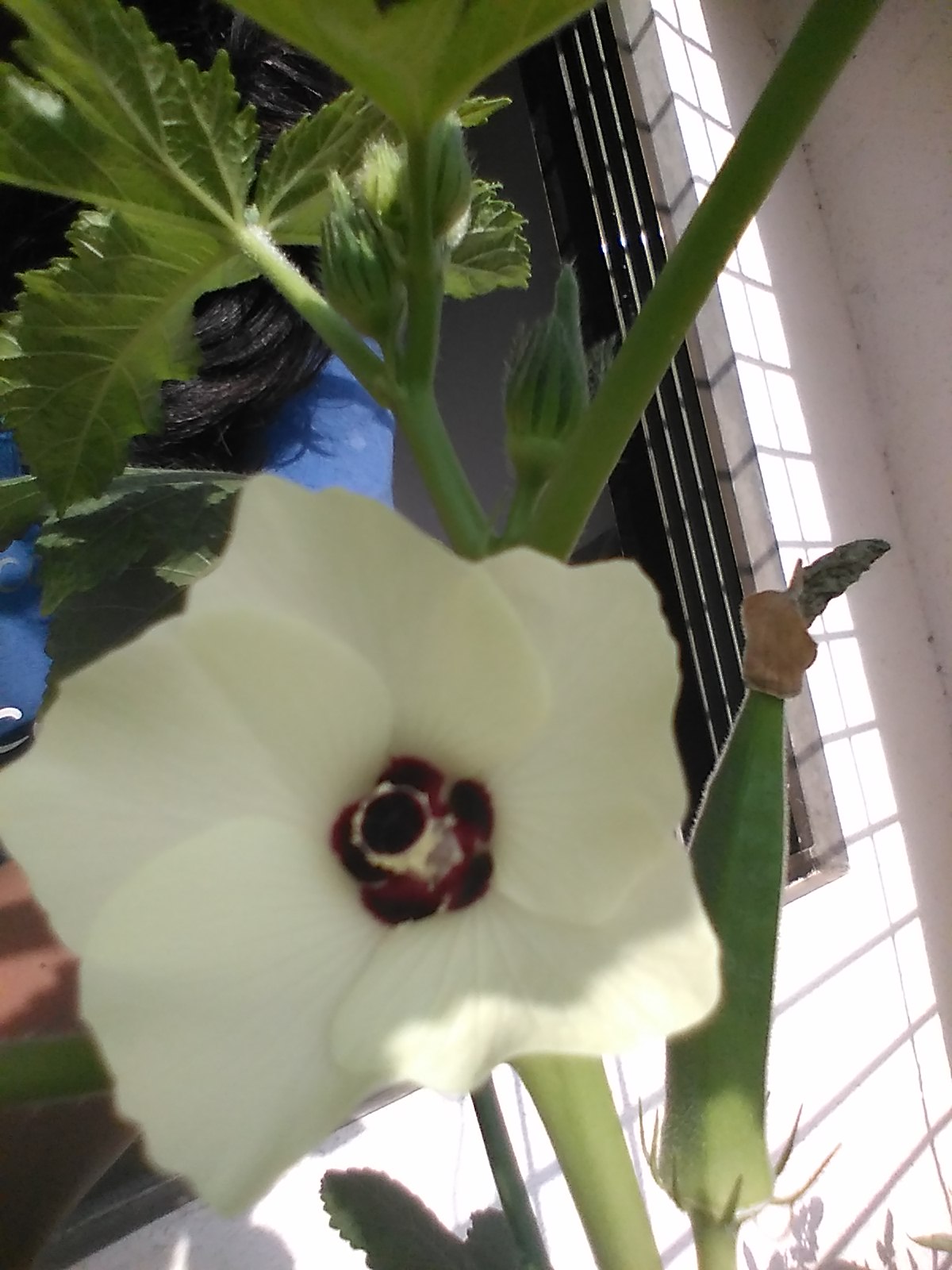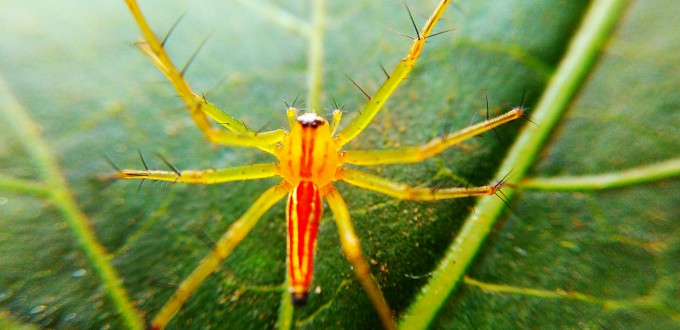I have learned a lot from videos, articles, tools and tutorials online, when it comes to soap making. Thought I’d pay it forward with some of my own learnings. Please note, this has nothing to do with “how to make soap” type introductory tutorials. This will be useful to you only if you already know how to make soap. And well enough to break rules without going into a panic. If you haven’t made soap before, this post is no use to you beyond curiosity. :p
Neem oil speeds up trace. Adding vanilla is almost instant sieze. How to swirl this?
Found this one out through sheer stubborn. You swirl it with a whisk. Turn the whisk into the soap like a chopstick swirl, but turning whisk as well. You put whisk in, you’ll figure it out instinctively. Pretty much the only way it will work without getting into puree zone. It breaks up rather than flows. Turn it anyway. Then bang down hard to remove as much air as you can. If need be, press down with a spatula. I don’t have a photo of this at the moment (since I found other ways to make a prettier neem soap), but it provides something of a chequered effect in an embed-like circular area in the soap, which looks quite nice (this shape/effect will vary). If the soap is softer, it can provide small rounded circles in that area instead of sharper corners. Either way, it isn’t as much of a disaster as I had imagined.
Curing cold process soaps fast
My soaps don’t zap within the first day or two of making, but for them to harden properly, etc is another story. This is why I have so much coconut oil in my recipes. Coconut oil, palm stearin, palm oil and neem oil. Get ready quite rapidly. Particularly recipes high in coconut oil. I usually don’t see much difference in them beyond a week or so after making. Dry weather helps. Warm weather helps (also encourages a good gel phase). Another thing I recommend with some caution is a water discount. Using less water reduces curing time, in my experience. However, using less water will also make your lye solution stronger, more likely to cause burns faster. It will also result in a faster trace – particularly if you use oils in which are in a hurry (which of course, you do, if you’re in a hurry :p ). Trick then is to ditch the blender and use a whisk or spatula and a great deal of diligence. Please note, it is better to have a sieze and hot process the whole mess than to fail to achieve trace (or at the very least a stable emulsion that won’t separate). This takes more effort without a blender, but frankly, a water discount and fast tracing oils are in a hurry to trace anyway, so it isn’t very terrible, like say… olive oil. I am able to ship such soaps without risking damage (to soap or skin) about a week or so after making when weather is dry. Do note, an additional time goes in shipping before the soap gets put to use.
Creating a frosted effect

Rose frost (The colors are far more subtle in the soap than this photo – my camera insists on adding saturation)
Using 10% or so palm stearin in a recipe superfatted at least 8% and having the lye slightly cooler than the oil. It creates a slight graininess that we usually associate with a false trace and the soap traces super fast (feel free to use a touch more water). But be certain to bring it to trace proper. By then, the graininess goes down a bit (or becomes less visible in a thick trace), but you can bring it back to varying degrees of visibility with some experiments with coloring. It appears as white dots in a colored soap – plain ugly in strong colors, but a faintly ethereal/frosted kind of look in pale colors. The white dots are where the palm stearin solidifies/saponifies in a hurry because the lye is slightly cooler. The soap is skin safe. Done over and over. Every time, as long as the superfat is above 8% in practice, but I’d say aim for 10% till you are comfortable with this. Better safe than sorry. Areas to pay attention – mix, mix, mix very fast when you are adding lye slowly – you want tiny grains not huge blobs – or you won’t get them small before thick trace (don’t ask how I know)
A grunge type look

Grunge look lemon soap
This is actually very easy. Slow tracing oils in a high superfat recipe – 5-8% or more brought to light trace and colored heavily with herbal colorants (this here is a lot of red sandalwood powder). Swirl thick colored emulsion as usual into a pretty liquid mix (more liquid than you’d usually use for swirling). And then jostle it a bit. Not shaking. More like slight sloshing from picking it and putting it elsewhere – a few times. If in doubt, better pick it and put it in another place a few times than shake too much – you’ll lose the swirls – everything is too liquid. Then let it set. The mistake I did with this was unmolding it too early. Should have waited another day. The slight smudged lines are from the cutting. They will vanish in use though the blurred/faded look will remain. Sodium lactate may improve the setting and unmolding situation a bit, but really, waiting was what it had needed and I didn’t give in my impatience. It could probably be done with more coconut and ditching the blender to get to the faintest hint of trace and a little more jostling before it sets – will probably lead to a happier unmolding experience. Will try and update.
Please note, this will not work with any colorant that will form a paste that holds together – clays will fail. Turmeric will work only barely and saturated. Micas will probably fail too. Don’t think liquid colors will work either. You want the grains of the colorant to get jostled out of place a bit. Sort of like bleeding, but with particles of the colorant. Herbal powders only, I think.
How to use hydrosols for fragrance in cold process soap
Dissolving lye in hydrosols reduces the scent to the point that by the time the cold process soap is ready, it is almost unscented. I have learned to do the obvious. A water discount (as little as 1.5 times the lye), bringing to trace pretty fast, and then adding hydrosol to make up the remaining water quantity after trace. Mix, mix, mix. Can be tricky with oils that trace fast, but for the most part, I have got good results. Sometimes you have to hurry. But the scent remains in place well enough for the soap to be properly scented without needing oil. I have found that I can add hydrosol upto the weight of the lye with some honest mixing properly back to a thick trace. More than that, and sometimes I have glycerin seeping. Clays help – both in preventing glycerin seepage as well as holding the hydrosol fragrance better. So I often mix clays in hydrosol and use for coloring the soap made with a water discount. Protects the hydrosol better than otherwise.
Shades of turmeric
Turmeric is yellow in color, but it becomes red in the presence of an alkali. I found that I can use this to advantage. Adding turmeric to lye will give a brick red, adding it to traced soap gives a bright orange-red, adding it to oil before adding it to traced soap (or adding it into oil phase) gives a more yellowy orange (oil probably forms a slight barrier from contact with the lye). Amount of turmeric can further play this into the range of reds, peaches, browns, etc. Oils used for the recipe can be used to enhance this. A peach type color can be created with turmeric in a pure coconut oil base, a more yellowy one with infusion of calendula or with sesame oil in the mix. But I am not yet expert at this, so results can be a bit hit or miss. Still experimenting.
Using indigo
Powdered indigo leaf can give muddy green speckles. This can be fixed by adding it to the lye phase if you’re making a blue soap, but if you aren’t and indigo has to be just one of the colors? I do this a bit ad-hoc, but hasn’t failed yet. Make a solution of indigo in water I eyeball it approximately to 3-5 spoons of water per spoon of powder (mostly because a more liquid colorant allows me to increase color more gradually than concentrated). Add sodium hydroxide in a tiny quantity – probably the weight of the powder (not volume) or slightly less. You don’t need a lot. The sodium hydroxide dissolves the leaf powder, leaving the dye behind (this may need to be done a couple of hours in advance). Using this solution to color gives an even blue. I have not found it to be particularly caustic (and I have a Ph meter), but if you think you used any significant amount of caustic soda, feel free to add a spoonful of oil for every spoonful of the colorant. It will ensure that the color doesn’t make the soap caustic. Though frankly, if you’ve used so much sodium hydroxide for this to be a concern, you’re probably better off mixing a small batch of soap separately for the blue.
Swirling two (or more) soaps instead of using colorants
I don’t do this too often, but sometimes I have these whims. Pure coconut oil is white, sesame seed oil is yellowish beige, olive oil is greenish, neem is all kinds of beige-brown depending on concentration, etc. And then the infused oils (which I don’t bother with – can use them as colorants directly :p ). Not all colors, but some can be done like this. Also handy if you want to really use indigo to the hilt – it thrives in the lye best. Keep everything ready, respective lye solutions near their intended base oils, etc. probably add fragrance oil to the base oils and then mix, pour, mix, pour, mix, pour, done. It takes a bit of preparation, but the doing itself is not actually difficult. You just have two or more soaps in your soap 😉 Most of the times this really comes in handy is to get a good white – nothing beats coconut on this, in my humble opinion, not even titanium dioxide if your oils don’t want to be white like coconut does. So sometimes, it is just easier to mix a small batch of coconut or coconut, rice bran, castor oil and palm and titanium dioxide or whatever whites for accents on the side and not worry about the rest of your recipe wrecking that with whatever oils and infusions you have planned. Takes planning. Not something you can do after reaching trace on main batch and getting a whim for a proper white. Would probably come in handy if you wanted to add a special oil that soaps soft and you don’t want your whole bar soft. Swirl it into what will be a firm bar 😉
Clearly, I am a bit on the crazy side, and color a lot outside dotted lines. Sometimes I warp a process out of recognition (what do you call a cold process thin traced soap thinned back with hydrosol or a hot process soap that gets colored like a cold process in the applesauce stage instead of proceeding to cook?). I experiment a lot, fail some too. As long as it ends with good usable soap, all is good, or there is the hot process batch or a Jumla soap. Thankfully, things haven’t reached those stages too often. Do let me know if you find this useful. Add your ideas too. And I will update if I have anything new to add. As in, new discoveries of my own. General soap making instructions and such, better people than me have done in better ways, many times over.


